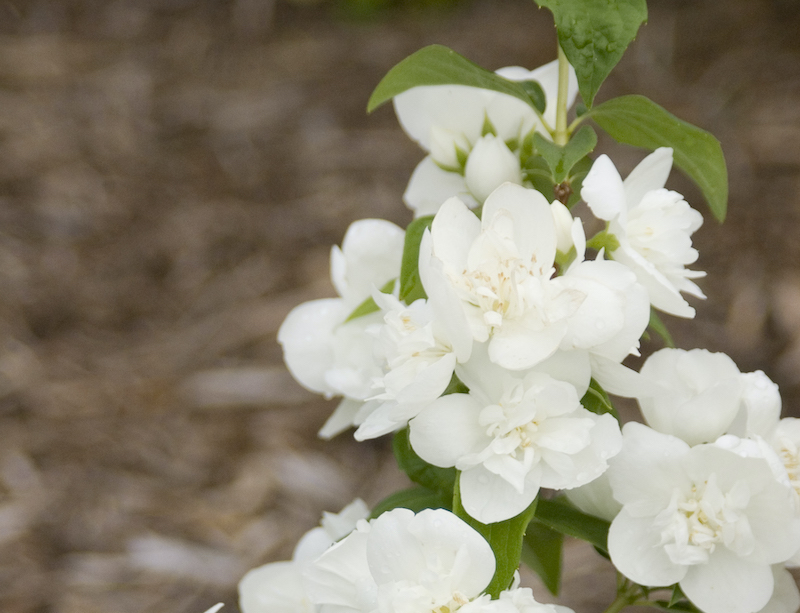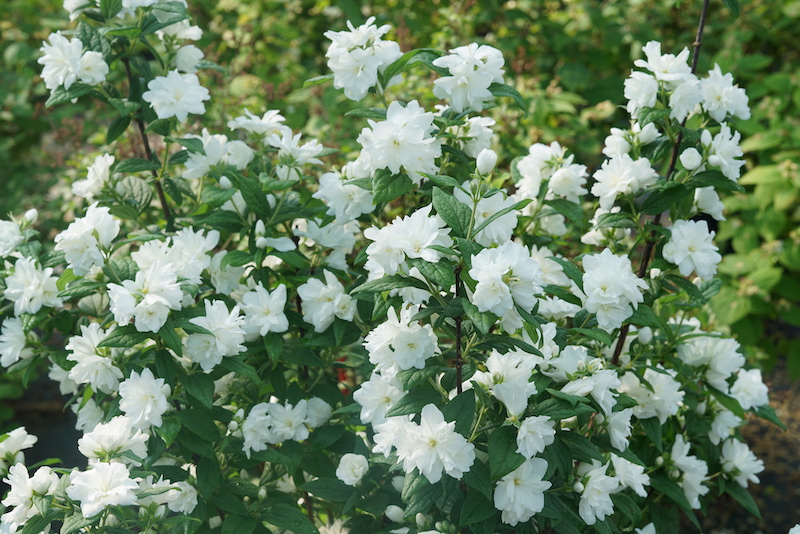Sweetly scented flowers with hints of citrus make Philadelphus cultivars, also known as Mock Orange, a lively addition to a landscape. This easy-care perennial shrub boasts showy flowers in the late spring and early summer. The greenery stays in place after the flowers fade until the end of the growing season. Mock Orange is a deciduous shrub that is dormant during the winter months. Most animals, including deer, tend to leave Mock Orange bushes alone.

Mock Orange is a good choice for areas with large deer or other foraging animal populations. While the oval-shaped foliage and showy blooms make an excellent addition to a landscape, this plant is simply not a preferred food source for foragers. Mock Orange drops its foliage in the late fall and winter, so it doesn’t have much to offer deer during that time. According to Rutgers University, this plant is Seldom Severely Damaged on their rating scale from Rarely Damaged to Frequently Severely Damaged.
| Rarely Damaged |
| Seldom Severely Damaged |
| Occasionally Severely Damaged |
| Frequently Severely Damaged |
Keeping Deer Away From Mock Orange
Mock Orange is not likely to be eaten and damaged by deer, but anything is possible. If you find foraging animals damaging your plants, you may want to put up fencing. Applying a scent-based deterrent or repellent is another way to keep animals away. Relocating the plant to a high-traffic area near a patio may discourage deer from getting close.
Will Mock Orange Come Back After Deer Eat Them?
Damaged Mock Orange plants will likely come back after deer or other animals eat them. Use sharp pruning shears to remove damaged growth. Mock Orange blooms on last year’s new growth, so your shrub may not bloom the following spring depending on what part of the plant was damaged. Help your Mock Orange bounce back by applying organic mulch around the base of the plant to give the shrub a nutritional boost. Fertilize the plant the following spring using a balanced, slow-release fertilizer.

Sources: Rutgers New Jersey Agricultural Experiment Station ‘Landscape Plants Rated by Deer Resistance’ 2018
 |
Author Alison Cotsonas - Published 01-23-2023 |
